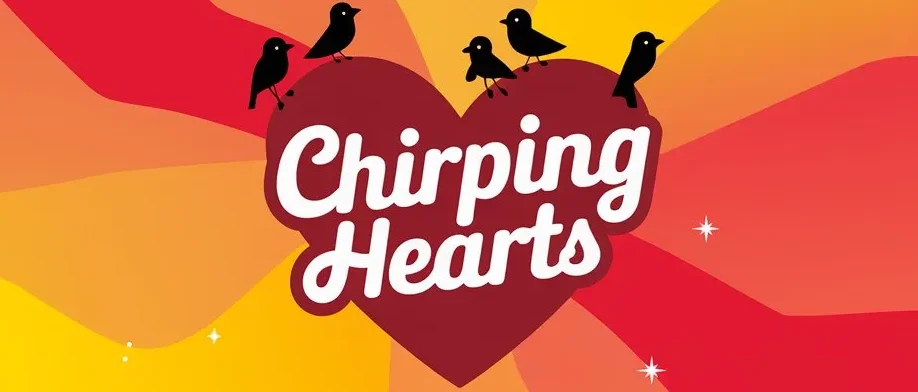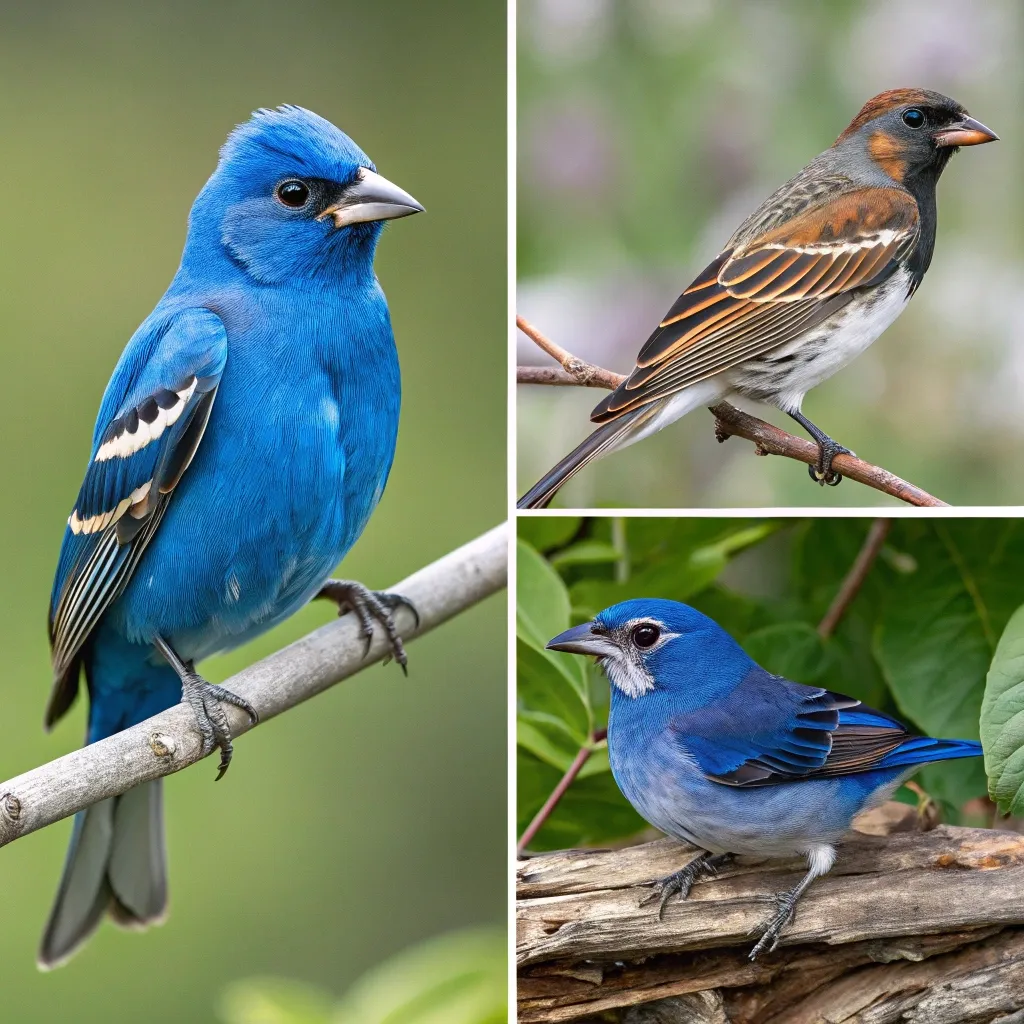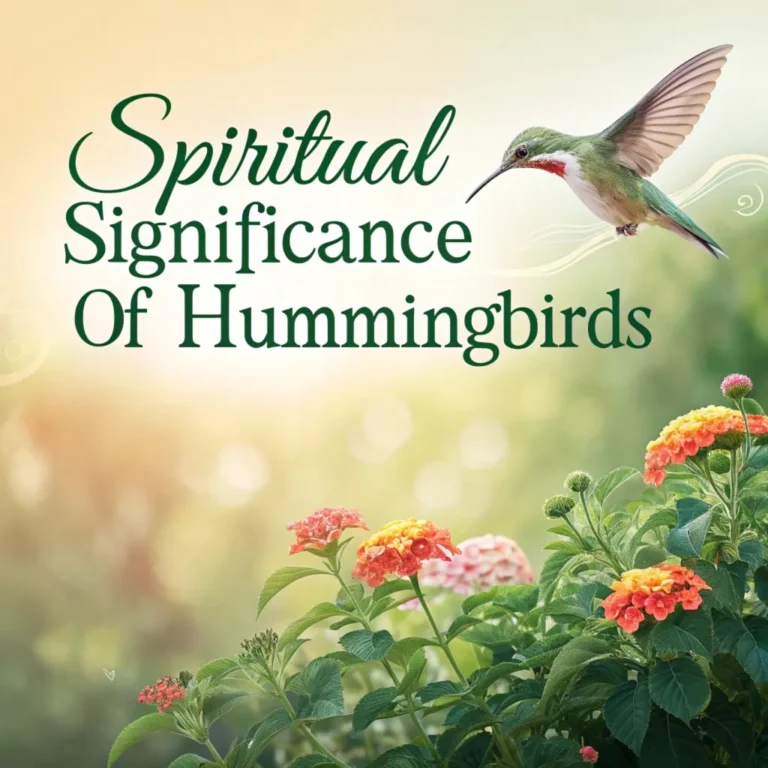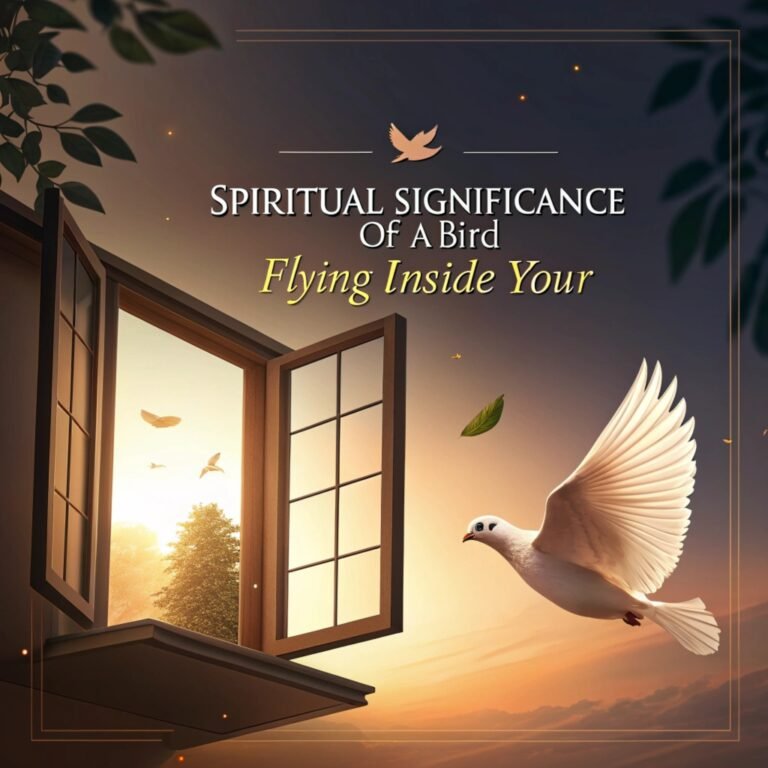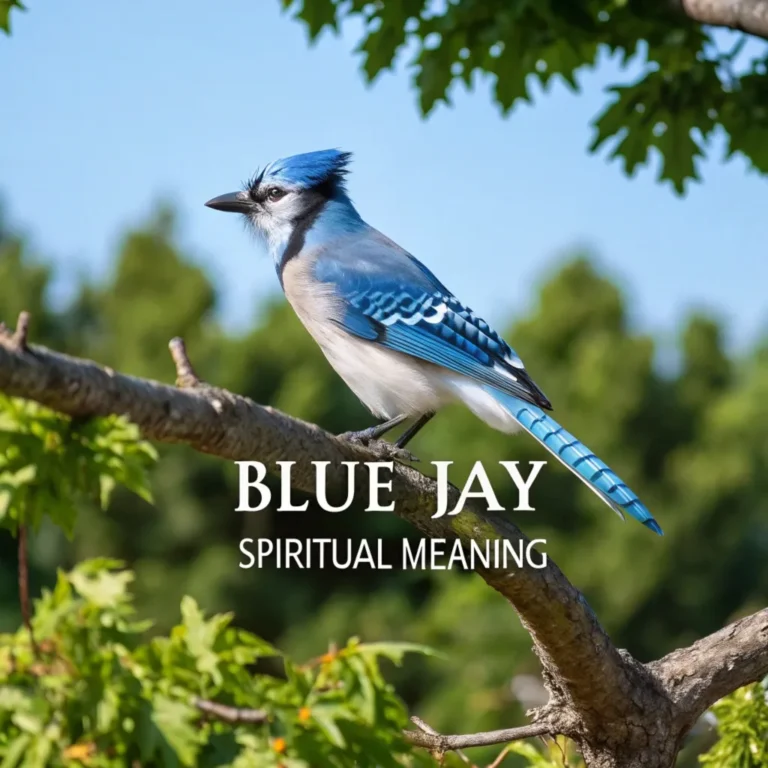Blue Grosbeak vs Blue Finch vs Indigo Bunting: A Comparative Overview
In the world of birds, few species are as mesmerizing as those adorned in shades of blue.
Among these, the Blue Grosbeak, Blue Finch, and Indigo Bunting stand out for their vibrant plumage and unique characteristics.
These birds are not only visually stunning but also fascinating in terms of their behaviors, habitats, and diets.
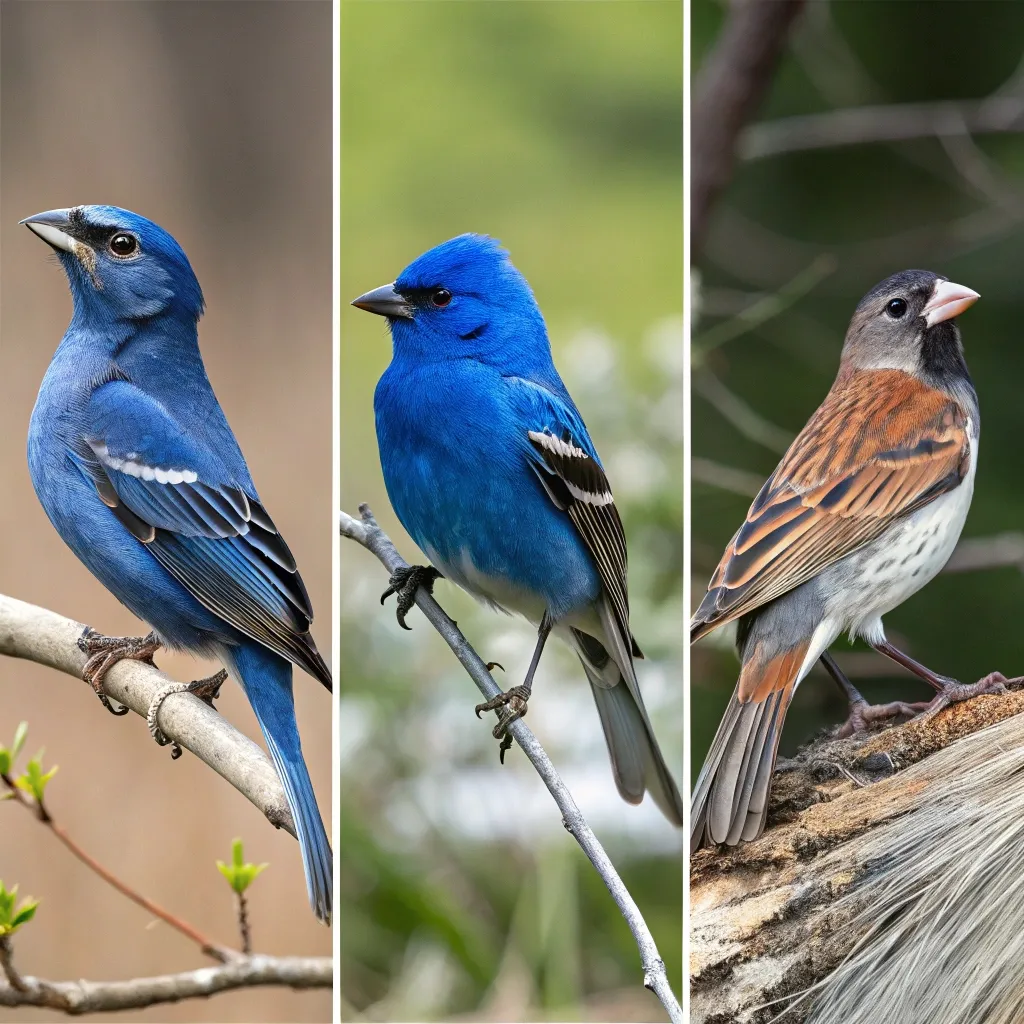
Key Takeaways
- Habitat Preferences:
- The Blue Grosbeak prefers semi-open areas like woodland edges and hedgerows.
- The Blue Finch thrives in dry savannas and grasslands.
- The Indigo Bunting inhabits brushy fields, farm edges, and riparian zones.
- Dietary Habits:
- The Blue Grosbeak is omnivorous, eating both insects and seeds.
- The Blue Finch primarily consumes seeds but occasionally eats insects.
- The Indigo Bunting shifts its diet seasonally between insects (summer) and seeds (winter).
- Behavioral Traits:
- The Blue Grosbeak is territorial and sings rich warbling songs.
- The Blue Finch is social and often forages in flocks.
- The Indigo Bunting is migratory and highly territorial during breeding seasons.
- Physical Characteristics:
- The Blue Grosbeak is larger with a heavy bill and chestnut wing bars.
- The Blue Finch is medium-sized with a paler blue hue.
- The Indigo Bunting is the smallest with iridescent blue feathers.
Habitat and Distribution
The habitats of these birds vary significantly, reflecting their adaptability to different environments.
The Blue Grosbeak is commonly found in the southern United States during the breeding season. It thrives in semi-open areas such as woodland edges, brushy fields, and hedgerows.
Its preference for dense low growth provides it with protection from predators while offering ample food sources. During winter, it migrates to Central America and northern South America.
In contrast, the Blue Finch is native to South America. It inhabits dry savannas and grasslands, where its pale blue plumage blends well with the arid landscape. This bird’s habitat reflects its ability to survive in harsh conditions with limited water availability.
The migratory Indigo Bunting, on the other hand, breeds across North America in brushy fields, farm edges, and riparian zones.
During winter, it travels to Central America or northern South America to escape the cold. Its migratory behavior ensures it has access to food year-round.
These habitat preferences highlight how each species has adapted to its environment. Whether it’s the Blue Grosbeak’s affinity for semi-open spaces or the Indigo Bunting’s migration patterns, each bird has carved out a unique ecological niche.
Dietary Preferences
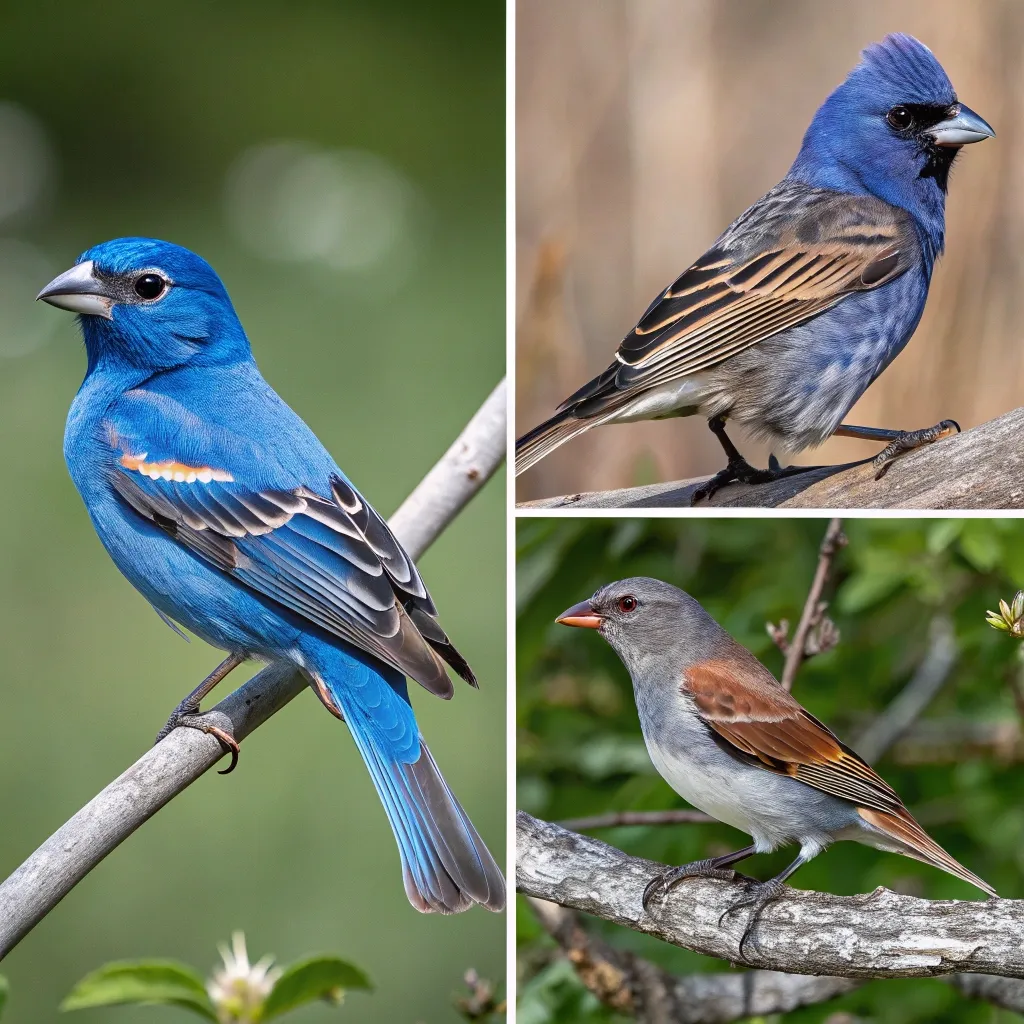
The diets of these birds are as diverse as their habitats.
The omnivorous diet of the Blue Grosbeak includes insects like grasshoppers and beetles as well as seeds from farm fields. This balanced diet provides essential nutrients during breeding seasons when energy demands are high. Its strong bill allows it to crack open tough seed shells easily.
The Blue Finch, being primarily granivorous, focuses on seeds but occasionally supplements its diet with small insects. This diet aligns perfectly with its savanna habitat, where seeds are abundant but other food sources may be scarce.
The diet of the Indigo Bunting changes with the seasons. During summer, it feeds on insects like caterpillars and spiders—an excellent protein source for breeding. In winter, it shifts to eating seeds from grasses and plants.
These dietary habits demonstrate how each bird has adapted to its environment’s food availability. While the Blue Grosbeak thrives near farmland due to its varied diet, the Indigo Bunting’s seasonal shifts enable it to survive long migrations.
Behavioral Traits
Behaviorally, these birds exhibit fascinating differences that make them unique.
The territorial nature of the Blue Grosbeak is evident during breeding seasons when males sing rich warbling songs to attract mates and defend their territory. These songs are not only beautiful but also serve as a warning to rival males.
The social behavior of the Blue Finch sets it apart. Unlike the solitary Blue Grosbeak, this bird often forms flocks that forage together for seeds. This social structure provides safety in numbers against predators while enhancing foraging efficiency.
The migratory behavior of the Indigo Bunting is another remarkable trait. During breeding seasons, males are highly territorial and sing persistently to establish dominance and attract females. Migration allows this species to escape harsh winters while ensuring access to food.
These behavioral traits highlight how each bird has evolved strategies for survival. Whether it’s defending a territory or migrating long distances, these behaviors are crucial for reproduction and survival.
Physical Characteristics
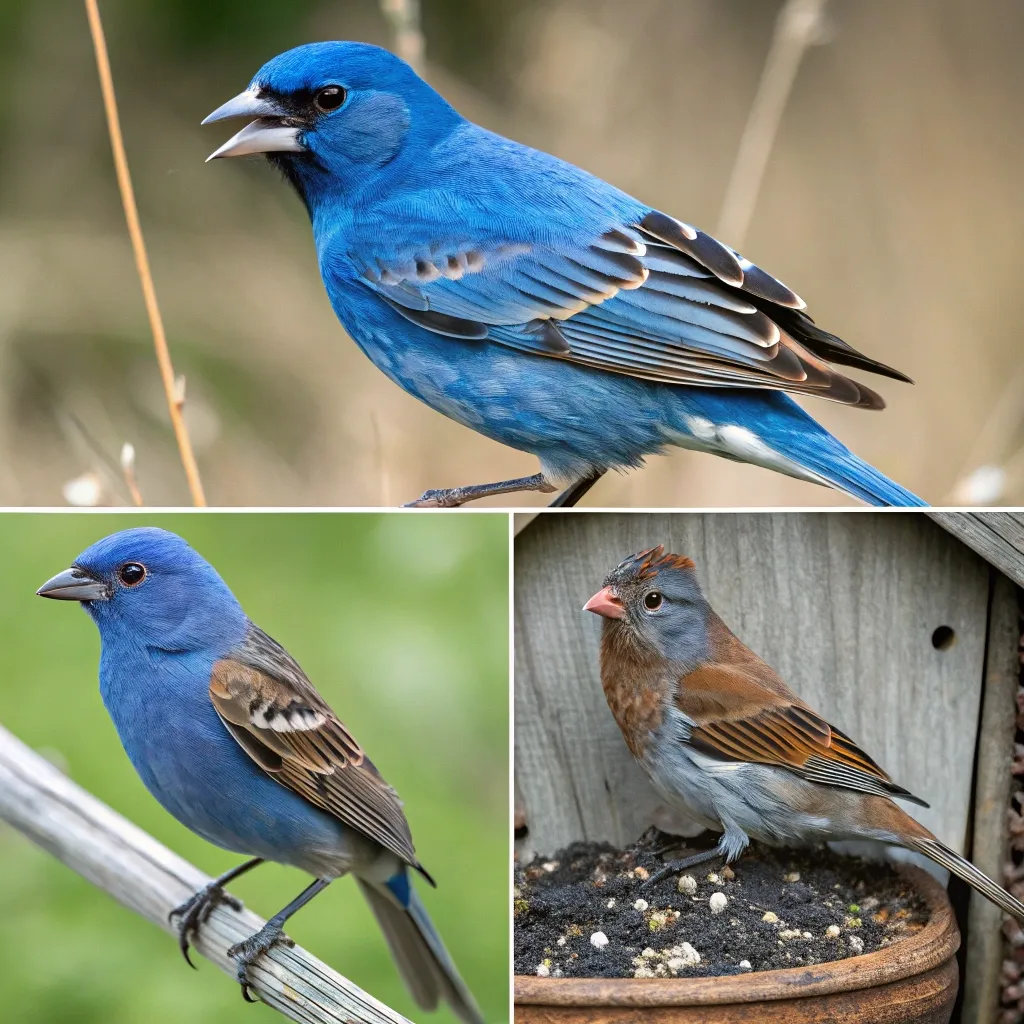
Physically, these birds are strikingly different despite sharing similar blue hues.
The Blue Grosbeak is the largest among the three species. Its heavy bill is perfectly suited for cracking seeds, while its dark bluish plumage features chestnut wing bars that add contrast. This combination makes it easy to identify in its natural habitat.
The medium-sized Blue Finch has a paler shade of blue compared to its counterparts. Its sharp beak is ideal for picking seeds from dry grasslands—a reflection of its savanna lifestyle.
The smallest of the three is the Indigo Bunting, known for its iridescent blue feathers that appear velvety under sunlight. This unique coloration changes depending on light direction, making it one of nature’s most dazzling sights.
These physical differences not only aid identification but also serve practical purposes like camouflage or attracting mates.
Vocalizations
Bird songs are one of nature’s most enchanting sounds, and these species do not disappoint!
Male Blue Grosbeaks produce rich warbling tunes—a melodic mix that echoes through their habitats during breeding seasons. These songs play a crucial role in mate attraction and territory defense.
The Blue Finch has simpler calls compared to the other two species but compensates with frequent vocalizations when in flocks—a behavior that strengthens social bonds within groups.
The Indigo Bunting’s song is a high-pitched series of paired notes that can last up to two minutes! Males use these persistent songs not only for attracting mates but also for marking territory boundaries effectively.
Conservation Status
While none of these birds are globally endangered at present, they face challenges like habitat loss due to deforestation or urbanization. Localized populations may experience declines if conservation efforts are not prioritized.
Preserving native habitats can make a significant difference! Planting native vegetation or reducing pesticide use are simple yet effective ways individuals can contribute toward protecting these beautiful birds for future generations.
Conservation Efforts: How to Help These Birds Thrive
Conservation efforts are essential to ensure the survival of the Blue Grosbeak, Blue Finch, and Indigo Bunting in the face of environmental challenges. Habitat destruction, climate change, and pesticide use are some of the biggest threats these birds face.
While none of these species are currently endangered, localized population declines highlight the need for proactive measures.
One of the simplest ways to help is by preserving natural habitats. For example, planting native shrubs and trees in your garden can provide food and shelter for these birds.
The Blue Grosbeak, for instance, thrives in areas with dense low growth, so incorporating hedgerows or brushy plants can attract them to your yard. Similarly, reducing pesticide use ensures that insects—the primary food source for Indigo Buntings during summer—remain abundant.
On a larger scale, supporting organizations focused on bird conservation can make a significant impact. Groups like the Audubon Society or BirdLife International work tirelessly to protect habitats and advocate for policies that benefit bird populations.
Additionally, participating in citizen science programs like the eBird Project helps researchers track bird populations and migration patterns, providing valuable data for conservation planning.
By taking small steps locally and supporting larger initiatives globally, we can ensure that these stunning blue birds continue to grace our skies for generations to come.
The Role of Blue Birds in Ecosystems
The Blue Grosbeak, Blue Finch, and Indigo Bunting play vital roles in their ecosystems. As seed eaters, they contribute significantly to plant dispersion. By consuming seeds and excreting them elsewhere, these birds help maintain plant diversity in their habitats.
This process is especially important in ecosystems like savannas and grasslands, where the Blue Finch resides.
Insects form a large part of the diets of both the Blue Grosbeak and Indigo Bunting during breeding seasons. By preying on insects like caterpillars and beetles, these birds help control pest populations, benefiting both natural ecosystems and agricultural areas.
Farmers often appreciate the presence of these birds as natural pest controllers.
Additionally, their vibrant colors and melodic songs bring joy to birdwatchers and nature enthusiasts. Their presence encourages ecotourism in many regions, indirectly supporting local economies while fostering a deeper appreciation for wildlife conservation.
How to Identify These Birds in the Wild
Spotting these blue beauties in their natural habitats can be an exhilarating experience! Here’s how you can identify them:
- Blue Grosbeak:
- Look for a larger bird with a heavy bill.
- Its plumage is dark blue with distinct chestnut wing bars.
- You’ll often find it perched on shrubs or fences in semi-open areas.
- Blue Finch:
- This medium-sized bird has a paler blue coloration.
- Its sharp beak is noticeable when it’s feeding on seeds.
- Search for it in dry savannas or grasslands, often in flocks.
- Indigo Bunting:
- The smallest of the three, its iridescent blue feathers shimmer under sunlight.
- Males are entirely blue during breeding seasons, while females are brownish with hints of blue.
- Look for it along brushy fields or woodland edges during summer.
Carrying binoculars and a field guide can enhance your birdwatching experience. Early mornings are often the best time to spot these birds as they are most active during this period.
Interesting Facts About Blue Grosbeak, Blue Finch, and Indigo Bunting
- The Indigo Bunting’s blue color isn’t due to pigments but rather the way its feathers reflect light—a phenomenon known as structural coloration.
- The Blue Grosbeak is known for its strong territorial instincts; males will aggressively defend their nesting sites during breeding seasons.
- The Blue Finch is not closely related to finches despite its name; it belongs to the tanager family.
- Indigo Buntings navigate during migration by using the stars—a remarkable ability that scientists have studied extensively.
- Blue Grosbeaks are often seen near farmland where they forage for grains, making them a common sight in agricultural landscapes.
These fascinating facts highlight just how unique each species is!
Final Thoughts
The Blue Grosbeak, Blue Finch, and Indigo Bunting are more than just beautiful birds—they’re vital components of their ecosystems with unique traits that make them stand out.
From their striking plumage to their diverse diets and behaviors, each species offers something special for bird enthusiasts to admire.
Whether you’re spotting a Blue Grosbeak perched on a fence post or listening to an Indigo Bunting’s melodic song at dawn, these experiences remind us of nature’s beauty and complexity.
By learning about these birds and taking steps to protect them—such as conserving habitats or participating in citizen science—we can ensure they continue to thrive.
So next time you see a flash of blue darting through the trees or hear a sweet warbling tune from above, take a moment to appreciate these avian wonders. They’re not just birds; they’re ambassadors of nature’s artistry!
FAQs
Q: What are the primary differences between Blue Grosbeak, Blue Finch, and Indigo Bunting?
A: Their differences lie in habitat preferences (semi-open fields vs savannas), dietary habits (omnivorous vs seed-based), behavioral traits (territorial vs social), and physical features (size and color).
Q: How do these birds adapt to changing seasons?
A: Seasonal migrations (Indigo Bunting) or dietary shifts (e.g., eating more insects during summer) help them survive environmental changes.
Q: Can I attract these birds to my garden?
A: Yes! Planting native shrubs or offering bird feeders filled with seeds can attract species like Blue Grosbeaks or Indigo Buntings.

Joyce is the passionate founder of Chirping Hearts, a website dedicated to sharing her love for birds and providing valuable information about avian life. With a background in ornithology and years of experience in birdwatching, Joyce aims to inspire others to appreciate the beauty and diversity of birds. Through her engaging articles and guides, she hopes to foster a community of bird enthusiasts who share her enthusiasm for these incredible creatures. When she’s not writing, Joyce enjoys exploring nature trails and observing birds in their natural habitats.
